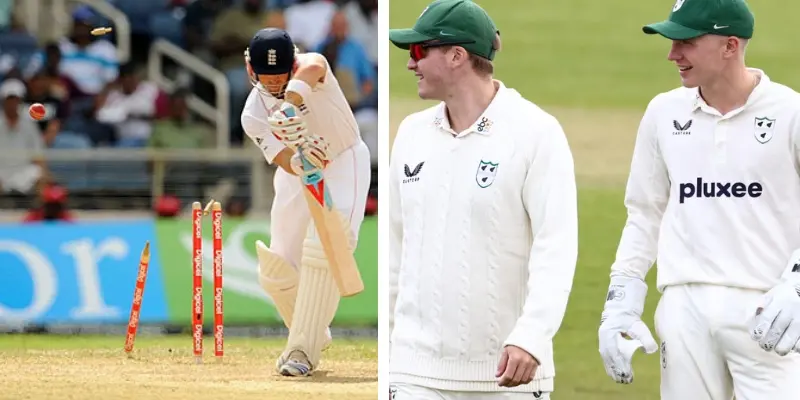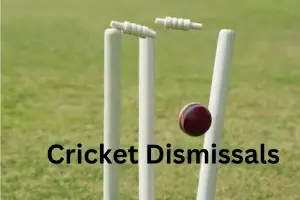How Many Innings In Cricket ? One Match Many Innings !
Published: 11 Jan 2025
Cricket isn’t just about one big innings—it’s made up of many little ones. Let’s explore this idea and see how many innings in cricket are at work during a match!
When you hear the word “innings” in cricket, you probably think of a team taking turns to bat and score runs. But what if we told you there’s more to it? Imagine a match where not just the team’s innings matters, but each batter has their unique battle – their own “innings within an innings.”
Every time a batter steps onto the field, they face their challenges—scoring runs, surviving tough balls, and helping the team. While the scoreboard displays the team’s total, each player fights to stay at the crease and make a meaningful impact.

Team Innings vs. Individual Innings
In cricket, “innings” doesn’t just mean when a team bats. It also includes each batter’s time at the crease. Let’s make it simple:
Team Innings
- A team innings is when all players take turns to bat.
- It starts when the first two batters come out and ends when:
- 10 batters are out.
- The team finishes their overs (like 50 overs in ODIs or 20 overs in T20s).
- The captain decides to stop early in Test matches (this is called declaring).
Individual Innings
- Each batter has their own innings during the team innings.
- This starts when they come to bat and ends when they are out
interesting fact: in a test match the batter’s innings remains continued if the batter remains not out. It will be considered the same innings when he starts batting in the next innings.
Innings in Different Formats of Cricket
The number of innings can vary based on the format being played. Let’s look at the main formats:
Test Cricket
- Test matches are played for 5 days with 4 innings in total—2 per team.
- Each team bats twice.
- The first team bats, and then the other team bats. After that, the first team bats again, and then the second team gets their turn (the final innings).
- Batters can have two individual innings if they get a chance to bat in both of their team’s turns.
One Day Internationals (ODIs)
- In ODIs, each team gets 1 innings.
- The team can bat for a maximum of 50 overs (300 balls).
- Each batter has one chance to bat and score runs.
Twenty20 (T20) Cricket
- In T20s also, each team gets 1 innings.
- The team bats for a maximum of 20 overs (120 balls).
- Each batter gets only one chance to bat.
In all formats, the goal is the same: score as many runs as possible. However, the way individual and team innings are structured makes each format unique and interesting.
When Does a Team’s Innings End?

A team innings ends when:
1-All batters are out: This happens when 10 of the 11 batters are dismissed (one batter always stays with the striker).
2-Overs are complete: In formats like ODIs or T20s, the team must finish their allowed number of overs (50 in ODIs, 20 in T20s).
3-Captain declares (only in Test matches): The team’s captain can decide to end their innings early to give their bowlers more time to dismiss the other team.
When Does an Individual Innings End?
A batter’s innings ends when:
They are out: This happens when the batter is dismissed by the bowler, caught, run out, or gets any other form of dismissal.
- The team innings ends: If the team has finished their overs or all batters are out, the individual’s innings is over too.
Special Situations and Terms For An Innings
Sometimes, the match has special situations that affect how innings are played. Let’s look at a few important terms and rules you might see:
Follow-On in Test Matches
- In Test cricket, if one team scores a decent amount of runs in their first innings and the other team scores much fewer runs than the other in their first innings, the team that batted first may ask the other team to bat again right away.
- This is called the follow-on. It happens when the team batting second is asked to bat again without waiting for the usual two innings.
Rain-Interrupted Matches
- Bad weather can stop a match, especially in ODIs and T20s.
- When this happens, the number of overs may be reduced, and the team’s target for runs can change.
- The Duckworth-Lewis-Stern method is used to adjust the target and make sure the game remains fair despite the lost time.
- This can impact how long a team gets to bat in their innings.
Retired Hurt
- Sometimes a batter can be physically hurt and cannot continue batting.
- If they’re unable to return to the field, they are considered retired hurt.
- If a batter retires and returns later, their innings continues, but if they cannot come back, the innings ends.
Fun Facts and Records
Cricket is full of interesting facts and amazing records when it comes to innings. Here are some fun ones that might surprise you:
Longest Individual Innings
The longest individual innings in Test cricket was played by Brian Lara of the West Indies. He scored 400 not out against England in 2004. This is still the highest individual score in a single innings of Test cricket!
Most Runs in a Team’s Innings
The highest team total in a Test innings is 952 runs, set by Sri Lanka against India in 1997. That’s a massive amount of runs for just one team’s innings!
In ODIs, England holds the record with 498/4 against West Indies in 2022.
Fastest T20I Innings
The fastest half-century in T20 cricket Nepal’s Dipendra Singh Airee scored an unbeaten 52 off just 10 balls against Mongolia at the Asian Games 2023
Most Runs in a Single Over
The record for the most runs scored in a single over is 39! Samoa set a new international record, hitting this incredible total in one over by hitting 6 sixes in a row. Three no-balls in the over helped him reach this milestone.
Final Thoughts
Innings in cricket are made up of both team and individual efforts. Each batter faces their own challenges, helping the team score runs. Whether it’s Test cricket or T20, each format has its own rules and excitement.
Special situations like follow-ons and rain delays add to the drama, while records like 39 runs in a single over show the game’s thrill.
Next time you watch, remember: it’s not just about the team, but the individual innings that shape the game.

- Be Respectful
- Stay Relevant
- Stay Positive
- True Feedback
- Encourage Discussion
- Avoid Spamming
- No Fake News
- Don't Copy-Paste
- No Personal Attacks

- Be Respectful
- Stay Relevant
- Stay Positive
- True Feedback
- Encourage Discussion
- Avoid Spamming
- No Fake News
- Don't Copy-Paste
- No Personal Attacks





